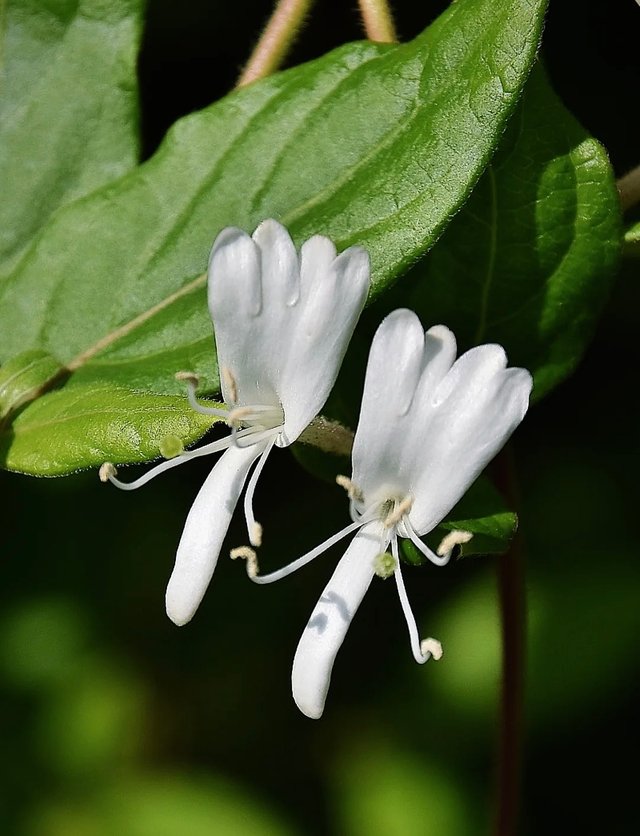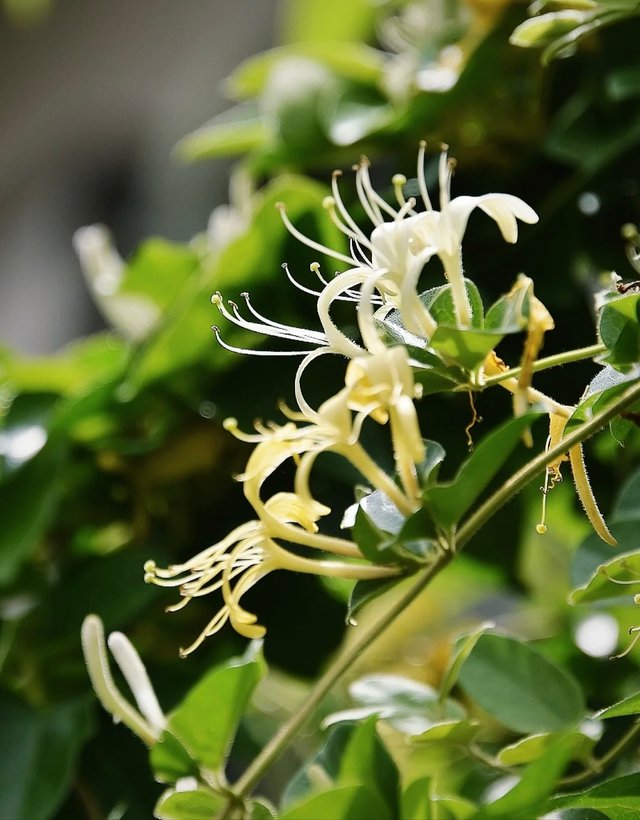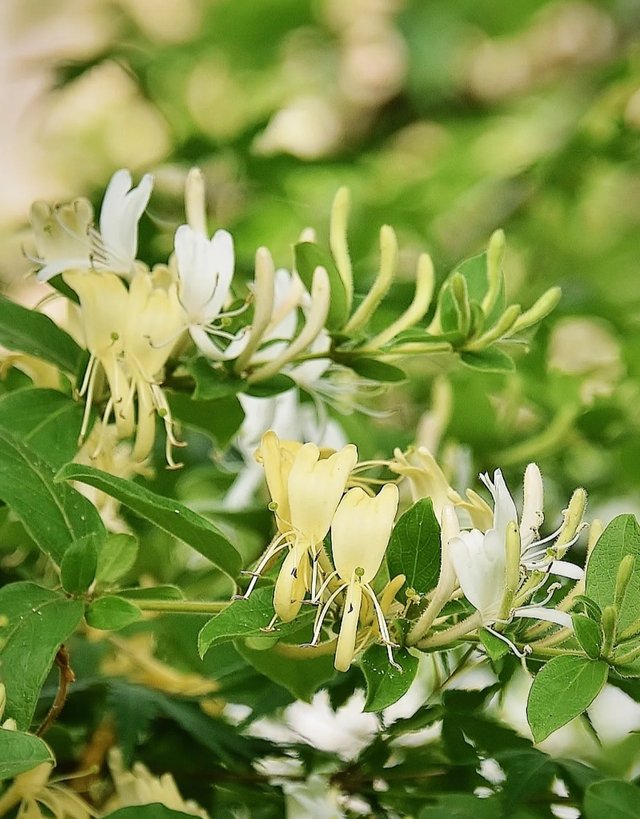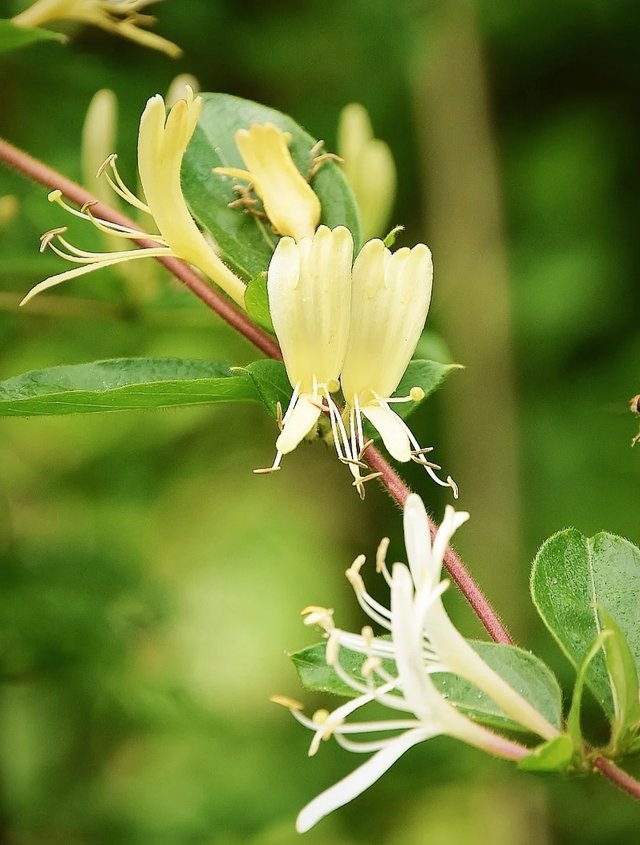Lonicera japonica
Lonicera japonica, commonly known as Japanese honeysuckle, is a flowering vine that evokes both admiration and controversy. With its sweet fragrance, creamy white and golden-yellow blossoms, and twining habit, this plant has captivated gardeners and poets alike. However, beneath its ornamental charm lies a plant with an aggressive nature, one that has earned it the status of an invasive species in many parts of the world. This complex identity makes Lonicera japonica an especially fascinating subject in the world of botany and ecology.
Native to East Asia—particularly Japan, Korea, and parts of China—it has been cultivated for centuries for its aesthetic appeal and medicinal properties. The plant is a vigorous, woody perennial vine that can climb over shrubs, fences, trees, and buildings.The blossoms appear in pairs and are tubular, measuring about 2–5 cm in length. They start off creamy white, gradually turning yellow as they age. This dual color scheme is one of its most charming features. The flowers emit a strong, sweet fragrance, especially in the evening, attracting pollinators such as bees, moths, and hummingbirds.
Despite its beauty, Lonicera japonica poses a serious ecological threat in many regions, especially in the United States, where it was introduced in the early 19th century for erosion control and ornamental use. It thrives in a wide range of habitats, from forests and fields to roadsides and urban areas.The vine’s aggressive growth can smother native vegetation by forming dense mats, depriving other plants of sunlight and nutrients. Its ability to root at nodes and regenerate from fragments makes it exceptionally difficult to control once established. In the southeastern U.S., it's one of the most notorious invasive plants, altering ecosystems and reducing biodiversity.




